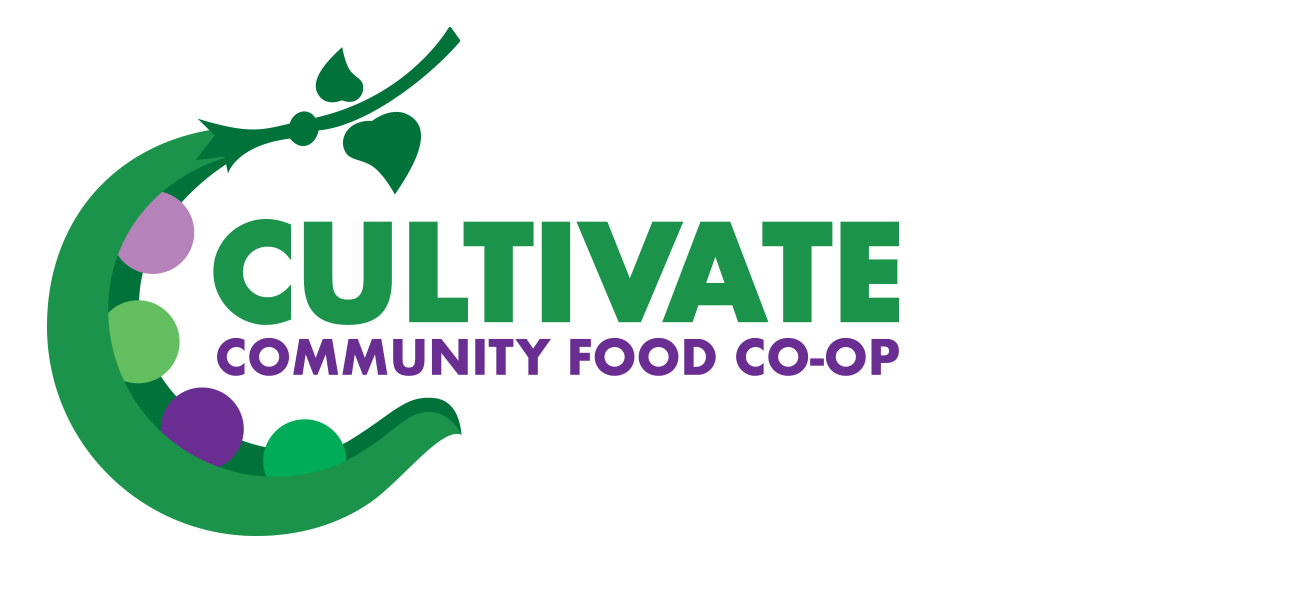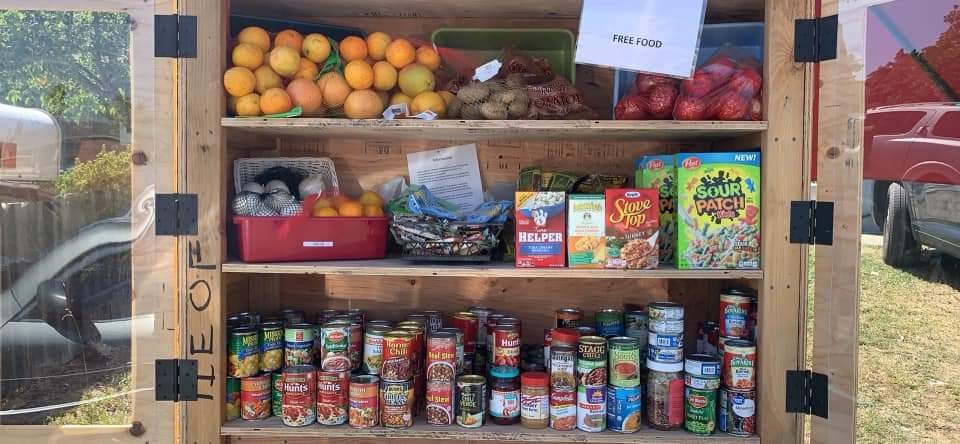
by Janine Ryle | Mar 5, 2022 | Community, Food
March is National Nutrition Month, an annual campaign by the Academy of Nutrition and Dietetics. This year’s theme is “Celebrate a World of Flavors”, and they encourage finding nutritious, healthy versions of traditional and cultural foods. The Academy’s goal is to increase awareness of healthy food and lifestyle choices. But how can you make a choice when there are very few or no healthy options available? This is a major issue that we face here in our corner of Solano County.
The USDA has identified many parts of our county as food deserts, and Vallejo—particularly South Vallejo—was one of them. Even in the parts of Vallejo and Benicia with full-service grocery stores, the ability to find affordable, fresh produce, meat- and dairy-free options, and anything organic is practically non-existent. Anyone with further dietary restrictions is hard-pressed to find foods suitable for them without driving up to Napa or across a bridge, which means those without transportation must do without.
However, look for a convenience store or fast-food establishment, and it seems there’s one on every corner. Due to the lack of accessible grocers, people often end up buying a good amount of their food at these places. Additionally, the poor nutrition in these foods can create and exacerbate dire health conditions such as Type 2 diabetes, obesity, and cardiovascular disease.
Add to this already bad situation the impact of COVID-19. A recent study shows that 13.3% of Solano County children live in food insecure households. Many residents are still relying on the food bank, meal distribution centers, and food donations.
This creates a type of food apartheid, where those with means and a car can still get the food they want—albeit by driving several miles—and those without a vehicle must make do with whatever food is available within walking distance, regardless of whether it meets their dietary needs or not. Typically, those who must shop at corner stores pay anywhere from 3 to 37% more than supermarket prices.
It’s a dire picture. Yet there are many people and organizations working on solutions. For example, Heather Pierini set up a small farm stand in front of her home, sharing the bounty of her garden with her neighbors. It was so popular, she set up stands throughout Benicia and Vallejo, where people could take what they needed, no questions asked. Her act of kindness grew into Food Is Free Solano, and still helps the food insecure in our area.
The Food Empowerment Project educates and advocates a vegan lifestyle and helps people on this path. Among other information on their website, they offer vegan versions of cultural and traditional foods. The Vallejo Project works with the community garden on Mare Island. And one of our owners, Chef Amen, is cooking and teaching people the benefits of a healthy diet and lifestyle.
We are thankful for these shining lights in our area. There’s only one thing missing—a beautiful, community-owned, full-service grocery store, full of healthy, nutritious foods and accessible to all. The time is now for Cultivate Community Food Co-op! Join us and let’s put doors on the store!
Sources:
Academy of Nutrition and Dietetics:
eatright.org/food/resources/national-nutrition-month
The health and well-being of children: kidsdata.org/
Food deserts defined: foodoasis.solanocounty.com/DesertFacts.aspx
Interactive USDA Food Access Research Atlas: ers.usda.gov/data/fooddesert
Food is Free foodisfreesolano.org/
Food Empowerment Project: foodispower.org/
Chef Amen on Facebook: facebook.com/7portasloffreedom
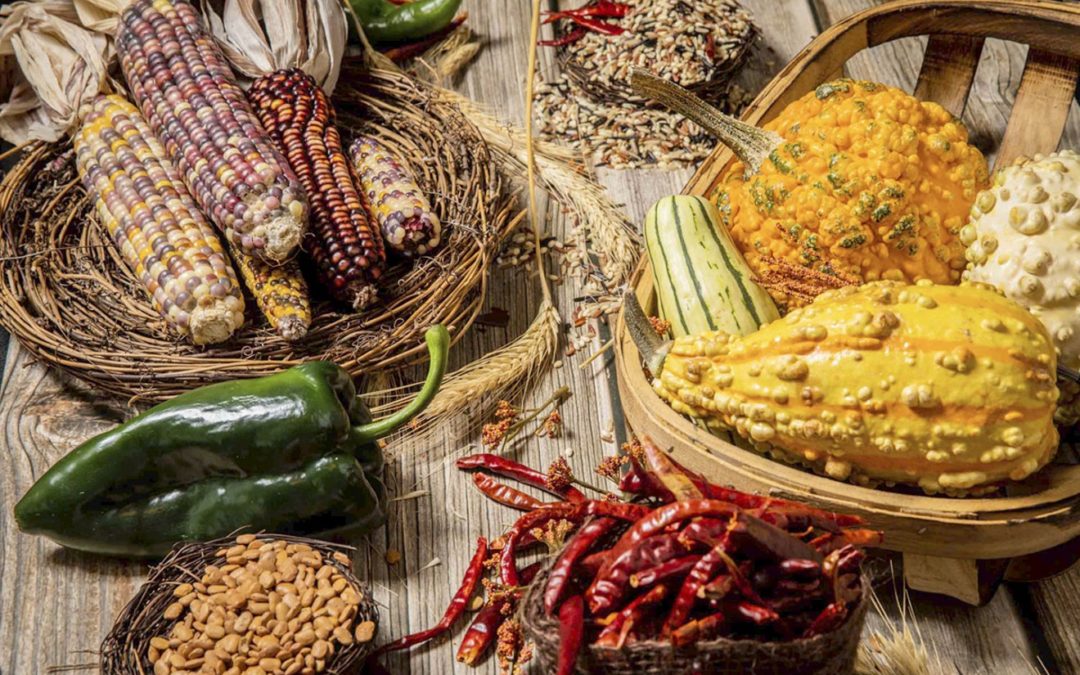
by Janine Ryle | Nov 10, 2021 | Food
Karkin, Patwin, Miwok, Wintun, Yocha Dehe, Cortina…do you recognize these names? These are some of the people who lived and still live on the lands we now know as Vallejo and Benicia. In fact, the Yocha Dehe Wintun Nation, along with the Kletsel Dehe and Cachil Dehe, have a historic government-to-government agreement and California’s first ever “cultural easement” to protect burial sites at the 15-acre park on the Glen Cove waterfront in Vallejo, part of their traditional ceremonial lands.
However, with the continued decline in diversity of agriculture and traditional Native foods comes a decline in the nutritional quality of our Native community’s diets. Not only that, many of these food traditions are being lost. Sadly, this brings with it many diseases which are becoming far too common, such as obesity and diabetes. Not only that, many of these food and cultural traditions are being lost.
Fortunately, there is a growing awareness of the importance of biodiversity and preserving traditional food sources. Professional Native American chefs are leading the way. Chef Sean Sherman—also known as the Sioux Chef—has written a cookbook and has cooking videos on YouTube. He founded the Indigenous Food Lab educational kitchen to train tribal communities on re-integrating traditional foods into their diets.
At CCFC, we envision having our own educational kitchen with culinary teachers from throughout our incredibly diverse population. This intention is rooted in our co-operative principles, specifically Principle 5 (Education, Training, and Information) and Principle 7 (Concern for the Community). In this setting, our varied, individual communities can learn more about their own traditional foods, and we as a whole can learn more about each other through sharing this knowledge and delicious food. What a delicious way to Cultivate Community!
Sources:
Yocha Dehe Wintun Nation website: https://www.yochadehe.org
Digital map of native lands: https://native-land.ca/
FoodTank’s list of 20 important indigenous foods: https://foodtank.com/news/2016/07/indigenous-foods-historically-and-culturally-important-to-north-americ/
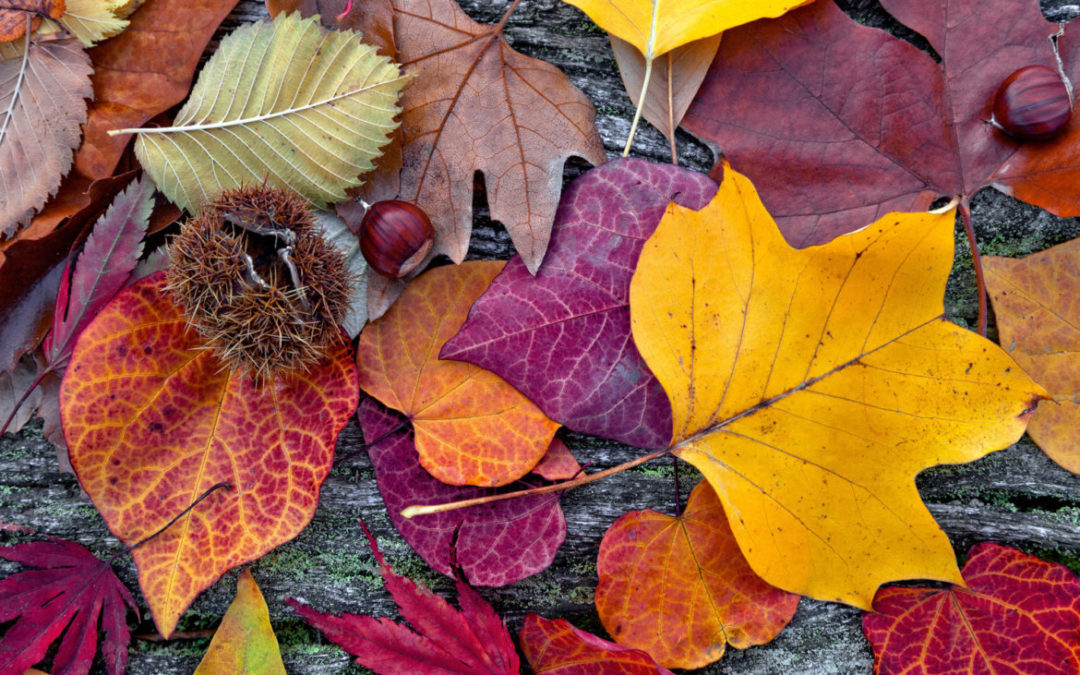
by Janine Ryle | Oct 5, 2021 | Community, Food
The wheel of the year continues to turn, and once again we find ourselves at harvest time. Pumpkins are everywhere. But why do we carve them, and where did the name “Jack-O-Lantern” come from?
In 17th century England, the term referred to a man with a lantern; if you didn’t know a man’s name, you might simply call him “Jack.” So, “Jack with the lantern” got condensed into “Jack-O-Lantern.” In turn, this name was given to a natural phenomenon, a flame-like phosphorescence that occurs when plants in marshy areas decay. The glow reminded people of a man with a lantern.
This still doesn’t explain why the name got applied to carved pumpkins. Besides, the original practice in Ireland was to carve creepy faces into hollowed-out turnips and light them with coals to frighten off evil spirits. When immigrants brought this custom to the US, they likely found pumpkins more plentiful, so began using them instead of turnips.
According to Merriam-Webster, there is a theory that the illuminated pumpkins were often set out by young people to scare others. The name for the swampy, glowing phenomenon was probably known in the US, so these ghoulish gourds became known as “Jack-O-Lanterns.”
Whatever you’d like to call them, carved pumpkins are a ubiquitous sign of the season. In order to use your pumpkin for puree, be sure to use a battery-operated votive light instead of an actual candle. It’s much safer and will keep the inside of your pumpkin from getting charred.
Be sure to check out our recipe corner for lots of things to make with your pumpkin!
Source: https://www.merriam-webster.com/words-at-play/the-history-of-jack-o-lantern
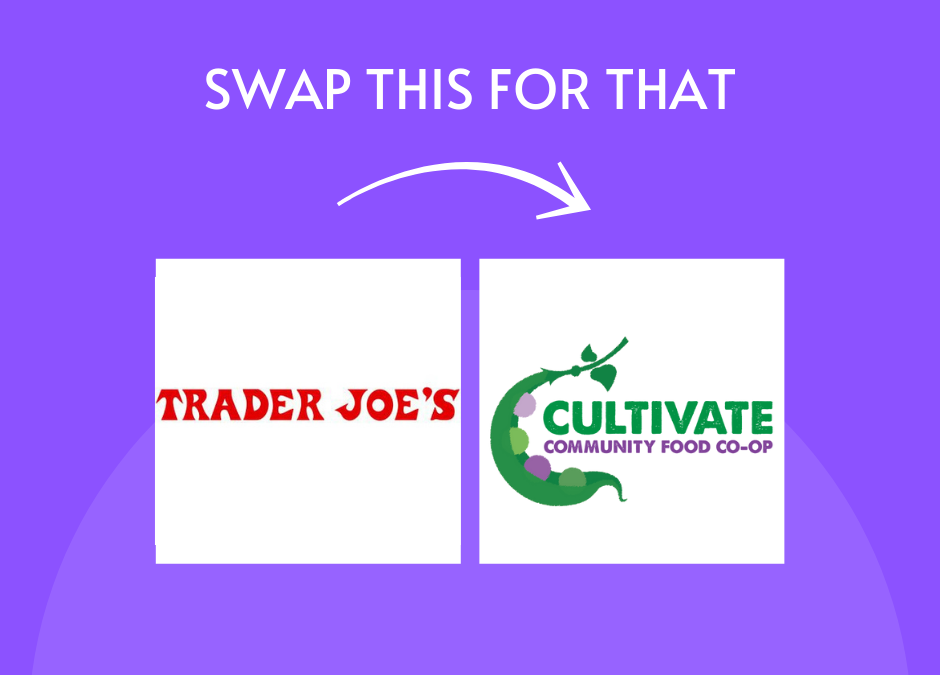
by Paula Schnese | Feb 13, 2021 | Community, Economy, Environment, Food
The topic of bringing a Trader Joe’s to Benicia has once again popped up on social media. In some ways, it is encouraging to see so many people who live here voice support for new grocery options in our area. But it is disheartening because there is already a growing grassroots effort under way to bring a food cooperative to town. It’s a more sustainable and equitable option. One that I am convinced if more people knew about, they would abandon their calls for another chain.
When I’m out talking to residents of Solano County they tell me, “I wish you would bring the food co-op to our town.” My response is simple, “Every town should have a food cooperative. But it’s a matter of having people in your town with a vision to get it started.”
I’d like to clarify a few things and share a few ideas because there seems to be some misinformation in these social media threads.
- You do not need to be an owner to shop at the store. We need owners and non-owners to shop at our store. The owners will simply get more discounts, discounts that eventually pay for the ownership. So that’s a no-brainer. In addition, the owners have a say in to what goes on in the store. Owner shares are $300 with a $5 service fee per household. Payment plans available.
- Big government and big business do not care about our little town. WE care about our little town! Time and time again, history has shown that when people unite and work hard for a purpose, things change!
- Food cooperatives have grown up! No longer are they the hippie, granola, food buying clubs of the seventies. Today, food cooperatives are well-oiled machines that drive the cultural and economic centers of communities. They come in all shapes and sizes and are unique to the needs of each community. They have personality!
- Given the choice, why on Earth would anybody choose to have a cookie cutter store that looks exactly like the store just down the highway which lines the pockets of a German billionaire than to get behind the idea (and a grassroots effort that is actually happening now! In our town!) of having a beautiful, unique, thriving, community owned store that puts millions of dollars back into our community. It’s because people don’t yet know the potential of a food cooperative. These people would rather stick with a broken system that is familiar to them, (broken because it’s intended to keep the rich getting richer and the rest of us working harder and harder), than to have the tenacity to created a new system!
- Just ask Kim and Luke of Fairyella Pure Pops (formerly Ice Pops), our town jewel. For the past seven years, while we were out playing every weekend, they were tabling at farmers markets. When they finally made it into the Whole Food Market, they thought they had made it, but NO! They have been put through the ringer by Whole Foods Market. WFM bullied Fairyella into sales and promotions for their profit (FPP took the hit for these discounts) and didn’t honor the terms of their contract agreements, (keep the product stocked regularly) causing slow sales and lost opportunities to scale up and go national. Mind you, FPP loves food co-ops! They sell to food co-ops all over the Bay Area and have a more equitable relationship with them. They will sell their pops in our store! As a result, FPP plans to quit shipping to retail and restructure as a non-profit in hopes to deliver to hospitals, schools and continuer their relationships with local food co-ops, at a better price for all.
- One of our core values is community. “CCFC is rooted in our community, owned by our community and we reinvest in our community” and that is why having a commercial kitchen in our store is so important to us. This commercial kitchen would be used for several things: education for school aged kids, cooking classes, and renting to food producers at a very reasonable price so they can actually make a profit on their product.
- When our local food vendors order raw materials to make their products, we could join forces where we can order in volume so they can get a discount. These are just a couple of ways that cooperatives work together to: a. Help their suppliers create a successful business where they can live a higher quality of life and enjoy their families instead of being stressed to the max by big grocery and b. Bring the cost of food down while still making a profit. See, in a food cooperative nobody has to be exploited to bring the cost of food down. Instead, we work together to find solutions so that everybody benefits.
- We know there are doubters in our community. Just know that we are not doing this alone, we are not reinventing the wheel. There is a proven model that has been used in communities all around the country. it will only be a matter of time until we get to the tipping point and then to our goal of 1200 founding owners.
- Other towns have successfully brought on co-ops that are thriving and provide a framework for a business model that can and will work for Solano County.
- We really are creating history here and there will come a day when people will use the phrase “before the co-op and after the co-op” when talking about the history of our town. The question I have for all of you is “What side of history do you want to be on?”
As an incentive to attract new founding owners to CCFC, Fairyella Pure Pops has gifted our latest Owners from February with a free case of Watermelon Pure Pops (18 pops ea.). Eighteen households will be receiving this special Thank You gift. Now that is the kind of cooperative spirit I’m talking about. More of this please! Thank you so much Kim and Luke!!
For more information about Cultivate Community Food Co-op and to become an Owner, find all our links here: https://linktr.ee/cultivatecommunityfoodcoop
This feature article was written by Paula Schnese, founder of Cultivate Community Food Cooperative.

by Janine Ryle | Dec 1, 2020 | Community, Economy, Environment, Food
New food co-ops are showing up in communities all around the country. Once mostly popular in college towns and urban areas, they are now opening their doors in marginalized areas and rural communities as well.
Exciting news from our friends and fellow food co-ops in Wisconsin, Ohio, and Virginia—they are all planning to open early next year! Even in the midst of the pandemic, their membership and capital campaigns grew along with their new buildings. Soon, they will be serving their member/owners and their communities with fresh, healthy food in their brand-new stores. Read on to see how these co-ops are transforming each community from food desert to food oasis…
Oshkosh Food Co-op: Located in downtown Oshkosh, Wisconsin, OFC has over 1400 owners and will be opening their doors in the summer of 2021. They will be Northeastern Wisconsin’s first food co-op and have been incorporated since 2013. They plan to focus on locally grown, organic produce. The store will be part of a development that includes 53 apartments above the store, and is easily accessible by car, bike, and public transportation.
Gem City Market: West Dayton, Ohio will soon be home to a brand new 8,000 square foot co-op with over 3,000 members. Gem City Market plans to open in early 2021 to bring healthy food to their neighborhood. Not only are they bringing food options, they are also providing needed jobs to the community. Residents are excited, as this area has been long overlooked by city planners. What started with inspiration from another co-op in Cincinnati led to community meetings in 2015, incorporation, membership and capital funding drives, and soon their doors will be open.
Fredericksburg Food Cooperative: Slated to open in early 2021, FXBG Co-op has over 1600 owner-members. The store will feature local produce to help support local growers and keep a focus on environmental sustainability in all aspects of their operation. It will be a full-service grocery store, as well as a community gathering place. It’s located less than a mile from a university, so students will certainly benefit from the new store. Owner-members will be participating in annual surveys to make sure the store meets everyone’s needs.
Please click on the links below for more information about these three food co-ops. Gem City has a newscast video and Fredericksburg shares a brief background of what a food co-op is. Seeing is believing. Please help us reach our goal of 1200 Owners soon so that we, too, can open our doors.
Main Sources:
https://www.wbay.com/content/news/Oshkosh-Food-Co-op-hoping-to-open-new-grocery-store–564294611.html
https://www.whio.com/news/local/gem-city-market-pushes-2021-opening-will-address-citys-food-desert/OBMCCKSCQVENFEXCHSBOWVAOCQ/
https://fredericksburgfood.coop/october-2020-update-from-gm-chris-roland/
http://blueandgraypress.com/2020/11/15/food-co-ops-and-their-appearance-in-fredericksburg/

